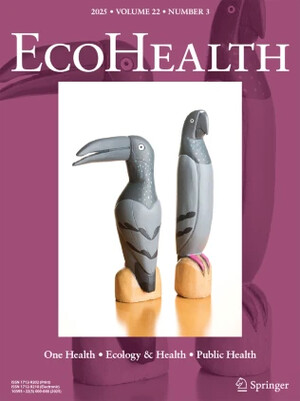
Modulation of mitochondrial electrical potential: A candidate mechanism for drug resistance in African trypanosomes
Abstract
Bloodstream forms of four populations of the livestock pathogen Trypanosoma congolense, isolated from different natural infections, have been shown to exhibit a wide range of sensitivities to the trypanocide isometamidium chloride (Samorin). In mice the 50 percent curative doses (CD 50) for Samorin range from 0.007 to 20 mg/kg body weight. Uptake of isometamidium chloride demonstrated Michaelis-Menten-type kinetics in all the populations with K values in the range 0.35-0.87 mu M. and V varied from 1- to 216 pmoi/min per 10(8) cells. The magnitude of V max was correlated with sensitivity to the drug. In contrast, no correlation was observed between Km values and drug sensitivity. Pulse-chase experiments indicated two compartments for accumulation of drug. The first consists of freely diffusible drug that is invariant between populations; the other consists of retained isometamidium, wich is of variable magnitude between the populations and is correlated with drug sensitivity. Auto-radiography and fluorescence microscopy demonstrated initial, rapid accumulation of the drug within the mitochondrion, specifically the kinetoplast. In a drug-sensitive population of T. congolense, agents affecting mitochondrial function were shown to produce dose-dependent inhibition of mitochondrial membrane potential (delta psi mito), as measured by the accumulation of the lipophilic cations (3H) methyltriphenylphosphonium iodide or rhodamine 123. The agents also produced parallel inhibition of isometamidium uptake, suggesting an involvement of delta psi mito in the accumulation of the drug. When characterized in each of the four populations, the spontaneous delta psi mito was shown to be characteristic of each population and was correlated with V max for drug uptake and sensitivity to the drug in vitro and in vivo. We therefore conclude that in T. congolense delta psi mito is an important determinant of the rate and accumulation of the trypanocide isometamidium chloride. Populations of this trypanosome species vary with respect to delta psi mito which is correlated with sensitivity to isometamidium. We suggest that when exposed to drug, the selection of such populations represents a novel mechanism of drug resistance in protozoan parasites.
Citation
Biochemical Journal;326: 755-761









